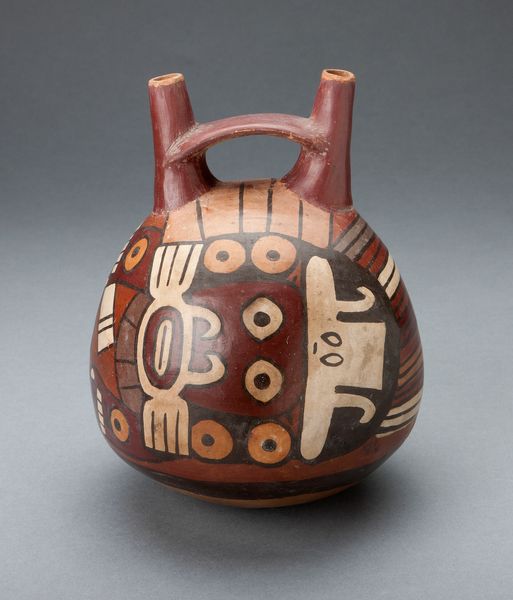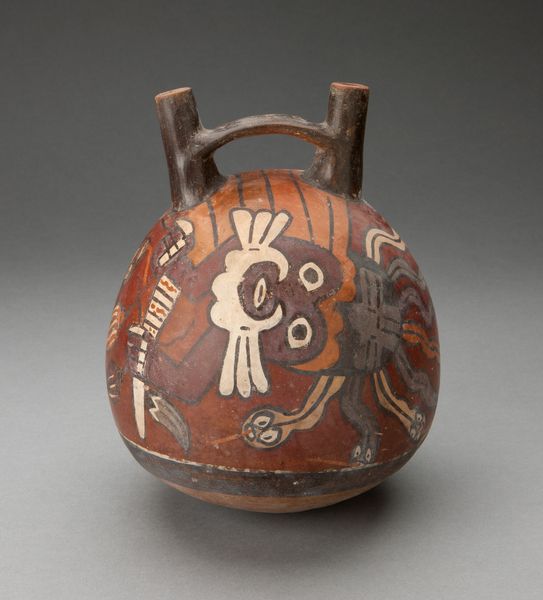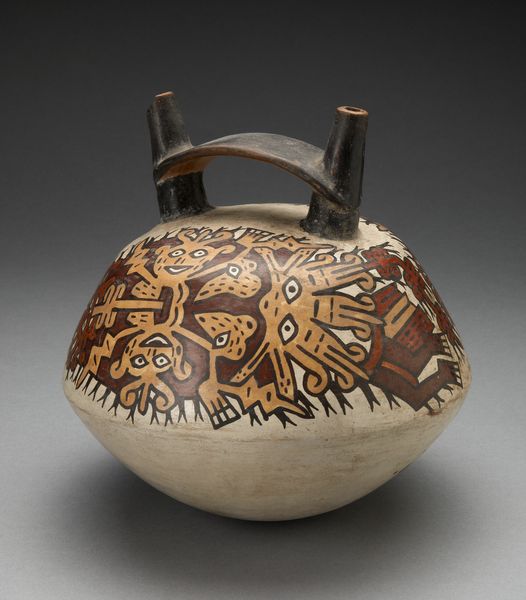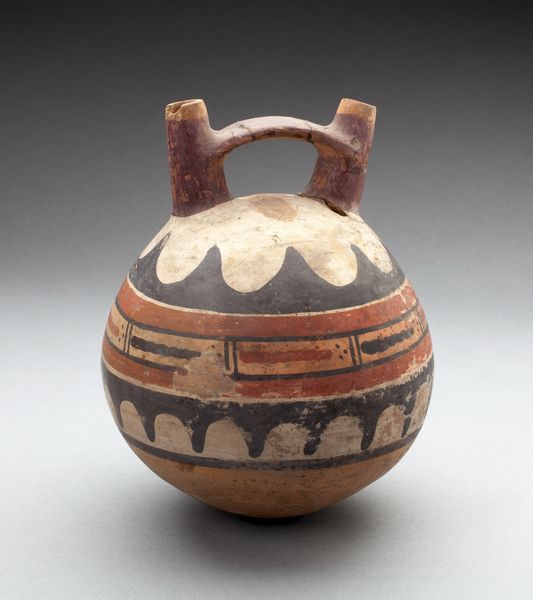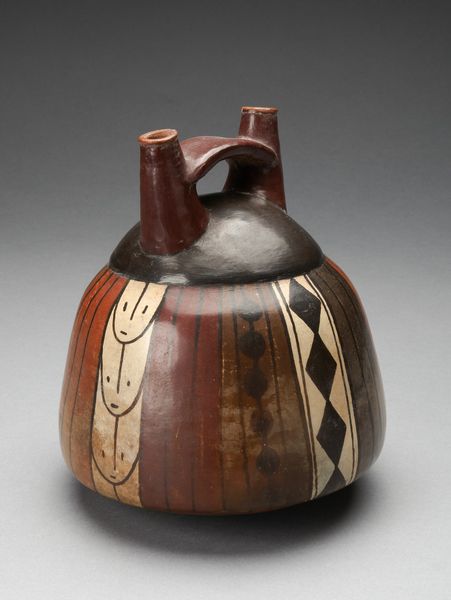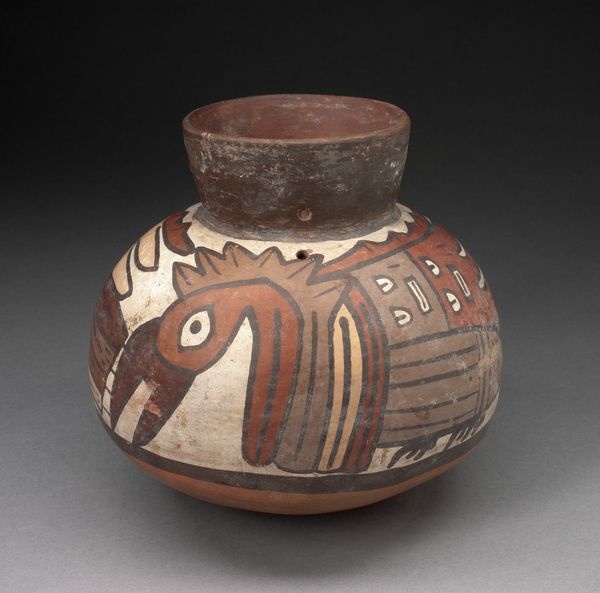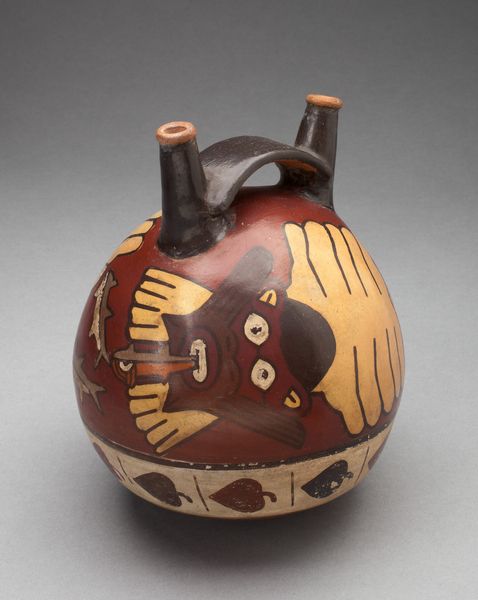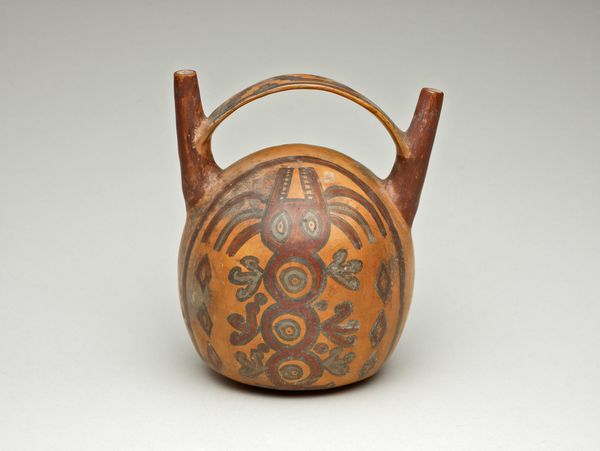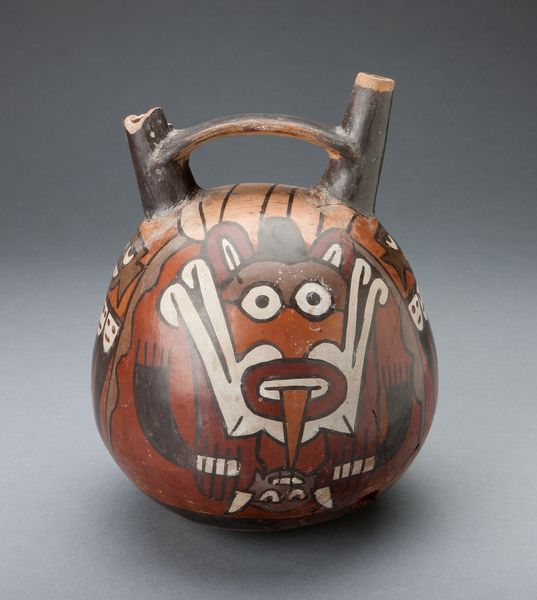
Double Spout Vessel Depicting Repeated Motifs, Possibly Beans c. 180 - 500
0:00
0:00
ceramic, terracotta
#
ceramic
#
geometric
#
terracotta
#
indigenous-americas
Dimensions: 15.9 × 13.5 cm (6 1/4 × 5 5/16 in.)
Copyright: Public Domain
Editor: Here we have a ceramic "Double Spout Vessel Depicting Repeated Motifs, Possibly Beans," made by the Nazca people, dating from around 180 to 500 CE. It's quite striking, but the bean-like shapes arranged over its surface are somehow also unsettling to me. How would you interpret this work? Curator: Well, immediately, the repeated motif pulls me into the rich symbolism present in Nazca pottery. The 'bean' shapes aren't just decorative; consider the cultural significance of agriculture in their society. Beans could represent fertility, sustenance, and the cyclical nature of life and harvest. Editor: So, are you suggesting it's less about aesthetics and more about conveying essential societal values? Curator: Exactly. Notice how the double spout structure itself becomes symbolic. Water was incredibly precious in the arid environment inhabited by the Nazca people, and pottery vessels such as this one had utilitarian as well as ritual functions, with complex iconography conveying cultural memory related to survival and renewal. What emotions does that provoke when considering this piece? Editor: Thinking of water and arid conditions certainly shifts the feeling. There's something resilient in it, a testament to survival. It is intriguing how a seemingly simple object embodies such complex concepts. Curator: Precisely. The emotional weight of this vessel shifts, it is both about a bean and so much more, transcending time, revealing cultural persistence through iconography, and subtly resonating with us today. Editor: I hadn’t considered the layers of meaning embedded within those shapes. Thanks to your insight, it now tells a deeper story about cultural survival and the power of visual symbols. Curator: And isn't that the fascinating aspect of iconography? To unearth narratives long hidden, simply through repeated visual cues, and that help bridge temporal gaps, to access the psyche of peoples long gone.
Comments
No comments
Be the first to comment and join the conversation on the ultimate creative platform.
